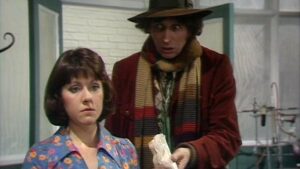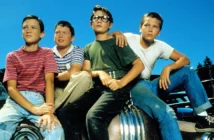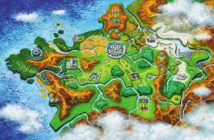It’s likely you have heard of Doctor Who. It’s also possible that you may have watched the show growing up – the words ‘David Tennant’ and ‘Matt Smith’ seem to emerge when this topic is brought up rather frequently by myself. Doctor Who is not necessarily a niche show, holding the BBC One Saturday prime time slot (though the relevance of that these days may be the topic of its own article). Doctor Who is one in which many tend to dip and out of, sometimes coinciding with the regeneration of the Doctors. Maybe catch the bigger moments every now and then.
In honour of Doctor Who’s 60th Anniversary the bulk of content relating to the ‘Whoniverse’ has been made available to the British public for free on BBC iPlayer. From almost the entire mainline show to in-universe spin offs such as the Sarah Jane Adventures and documentaries, including Talking Doctor Who hosted by David Tennant, and the Doctor Who editions of the BBC Proms. The entirety of ‘New Who’ (2005-2022) is on iPlayer, though admittedly has been for a couple of years. Where this streaming collection gets interesting is the Classic Series (1963-1989, 1996) which features most of the stories from Doctor Who’s 26 year original television run.
These stories were initially broadcast week-by-week on BBC One with further repeats happening sporadically, usually around the time of anniversaries, following that. Individual serials and boxsets were released on home media from the 1980s onwards, thus locking readily accessible Doctor Who behind a paywall. This is the first time the vast majority of stories have been freely available to the British public to stream. Handfuls of stories had been available ‘on demand’ for Doctor Who’s 50th anniversary however these were selected handfuls from each Doctor rather than an attempt to provide access to the show’s entire catalogue.
Much of this seems to have been masterminded by returning showrunner Russell T. Davies as he seeks to celebrate the programme before drawing a line in the sand for a soft reboot (same universe, and a continuity but with fresh introductions) as Ncuti Gatwa takes to our screens.
The classic series is therefore the one less familiar to most modern viewers, including those who are still rightly fans of the show. A drawback to some has been the paywall; when Doctor Who was first available to stream it was as part of BritBox. Now, freely available, the classic series is one that can be explored by any who wish…providing you have a BBC iPlayer account.
For various reasons, not every classic serial is available, primarily this is because hundreds of episodes from the 1960s and 1970s were wiped as was common practice in a time before home media. Episodes have been rediscovered and animated, but there are still a few gaps across the programme’s early years, only for the First and Second Doctors though.
Beginning as a show aimed to educate children history and science, Doctor Who has always been evolutionary. The regeneration process – changing from one Doctor to another – is a staple of the show alongside the Daleks and Tardis. While there can be some similarities drawn between the leading actors – the first dozen were white men, all so far have been British (Ncuti Gatwa identifies as Rwandan-Scottish), etc – as it is meant to be the same character throughout, the incarnations are unique by design. Thus, it is a show that is unlikely to carry the same level of appeal throughout. Different genres naturally align to different tastes. It has changed in line with the times, sometimes borrowing elements from other popular media of the time. From The Quatermass Experiment (1961) to Hammer Horror (1935-79) to The X Files (1993-2002), the history of Doctor Who is an interesting one to dip into if you’re interested in the evolution of pop culture or just curious about those wobbly sets.
Yes, there were some stories with cardboard cut-out Daleks. Did you know there was also an alien disease made from bubble-wrap and an inflatable snake? Early uses of blue screen can be somewhat excused, the ‘BBC Budget’ was a rather notorious shorthand for ‘we don’t have Star Wars money’. Doctor Who was intended as a children’s show, aimed at a broad audience due to the centrality of TV’s three channels from the sixties to the eighties, but a children’s show nonetheless. Therefore, when approaching the classic series (1963-89), or even the early revival years (2005-2010) if you’ve forgotten what mid-noughties TV CGI was like, don’t be put off by the special – or questionable – effects. Often knowing its own limitations, the stories have a focus on, well, the story. Adventure and imagination, a bit of whimsy.
Speaking of story, Classic Doctor Who was serialised for its entire run. While some seasons have wider arcs and some stories lead into another, the format primarily consisted of individual serials. A bit like a book series. Each serial is a book and each episode is a chapter. While that may be a redundant thing to explain in the age of streaming where almost all of the most popular shows are serialised, leading to the binge-watch, the format is not entirely comparable and some have found it an off-putting element of the classic series. Some stories are two parts in length, a handful are three, most are four but when you begin to approach the six to seven-to-ten-episode serials the pacing can drag whether you are used to it or not. Especially in contrast to people familiar with the programme’s format following the revival in 2005 where single standalone 45-minute adventures were the norm.
The serialised nature could be something that appeals to you, though, as more time is spent building to the main events, therefore the stories have more elements to them to fit the run time. The Doctor and companions will often be split up with their own side plots before they are re-united. As discussed earlier, the show evolved and experimented across the 26 years on screen, as such the structure and pacing of a 1989 serial has a different feel to that of a 1975 or 1963 story.
Now, assuming you are not all that (or at all) familiar with Classic Doctor Who but know the basic set up of the programme either from the revival or general pop culture, where would be some good places to start or dip into now it is (almost) all available on iPlayer?
You may be tempted to start at the start, and that seems reasonable enough, but aside from this not being too advisable if you’re not familiar with 1960s British TV (it could be rather jarring), the first serial is currently involved in a rights dispute.
The First Doctor (1963-66) played by William Hartnell
The First Doctor is probably the hardest to go back to if you are a modern viewer although I would recommend checking out an episode or two, carry on with the rest of the serial(s) if you wish. The show was naturally still finding its feet, thus, in some stories the Doctor is more antagonistic and violent than you would expect today. William Hartnell was also prone to forgetting his lines and improvising – sometimes well and sometimes badly – because it was shot on tape the scenes could not be redone. Hartnell was plagued with periods of bad health, later dying at the age of 67 in 1975. Lastly, and this happens to a lesser extent in Patrick Troughton’s tenure, the members of the main cast would be absent for the odd episode randomly. Behind the scenes this was because the show had a relentless production schedule, at 48 weeks per year it was akin to a soap opera. To compensate, the actors would be granted a week’s leave.
‘The Time Meddler’ (Season 2)
Broadcast July 1965, the Time Meddler is a four part story set in 1066. The titular Time Meddler is more of an antagonist than an outright villain. He seeks to cause chaos through time for fun, in this case by wiping out the Vikings and helping Harold Godwinson win the Battle of Hastings. Peter Butterworth plays the Meddling Monk and there are some revelations about his connection to the Doctor which were series firsts.
This story is one of the more approachable Hartnell stories. Set in a relatively familiar historical period, with a steady pace and small principal cast. It is also the first Tardis adventure for Steven Taylor played by Peter Purves, thus he is likewise being introduced to the circumstances.
‘The War Machines’ (Season 3)
The final serial of Doctor Who’s third season, the show did not really do finales in the modern sense so this story can still serve as an introduction. ‘The War Machines’ is set in 1965, though the serial aired across June and July 1966, and is very much a sixties sci-fi story. The Doctor is initially accompanied by Dodo but she makes her last appearance on screen in episode 2 to little fanfare. He later meets Ben Jackson and Polly who aid him in defeating the AI and voice operated computer WOTAN from invading London via the Post Office Tower. Another four part story, like ‘The Time Meddler’, the premise of this story is straightforward. Computer controls minds to build an army of machines to destroy London.
The Second Doctor (1966-69) played by Patrick Troughton
The Second Doctor provided a lot of inspiration for Matt Smith’s Eleventh as Patrick Troughton brought a lot of his own charm and jovial nature to the part. The Second Doctor is where the character begins to become more familiar to modern audiences. Often playing the fool but holding all the cards.
‘Tomb of the Cybermen’ (Season 5)
For many years this was the only complete Patrick Troughton serial, therefore it is probably the most watched of his adventures. Although first seen in the previous story, Tomb of the Cybermen introduces the character of Victoria, a Victorian teenager, to the Tardis and the premise of the show. It is her first adventure, though she is a rather nervous participant. The Daleks had previously killed her father, leaving her in the care of the Doctor. This story borrows elements from the 1932 film The Mummy and other classic horror films.
The Third Doctor (1970-74) played by Jon Pertwee
Jon Pertwee has sometimes been compared to James Bond in his portrayal of the Doctor. They’re not too far off but keep in mind it was James Bond of the 1960s and 70s and, as ever a family show, the Doctor was more interested in science than sex. For most of the Pertwee era, the Doctor was exiled to earth working as Scientific Advisor for UNIT, a fictional branch of the United Nations dealing with extra-terrestrial threats, taking inspiration from the previous Quatermass series.
‘Spearhead from Space’ (Season 7)
Pertwee’s first story and a bit of a soft reboot for the series. Almost the entire cast is newly established here and are introduced to UNIT, establishing the format for the early 1970s. This is the first TV Doctor Who story to be in colour and also the only one to be in HD. Due to industrial action, 16mm film was used instead of the cheaper video tape.
‘The Time Warrior’ (Season 11)
The story that introduced Sarah Jane Smith and the Sontarans, who would both later feature in modern Doctor Who and the Sarah Jane Adventures. This story has a quick pace as the crew travel from 1970s London to the Middle Ages. Sarah Jane is a familiar character keeping many traits throughout her tenure and later reprisal.
The Fourth Doctor (1974-81) played by Tom Baker
The longest Doctor to date and likely the most famous classic incarnation, Tom Baker’s Doctor is one of the most eccentric. Due to Baker’s tenure spanning seven years, the era exhibited a greater variety as different showrunners and writers changed hands.
‘City of Death’ (Season 17)
There’s a green alien in disguise, splinters in time and somebody’s trying to steal the Mona Lisa. This story is one with a quick pace and witty script partially penned by Douglas Adams, later known for writing Hitchhikers Guide to the Galaxy.
The Fifth Doctor (1981-84) played by Peter Davison
The Fifth Doctor is more down to earth and human when compared to that of the Fourth, he doesn’t own the rooms he enters, instead playing more of an underdog figure.
‘The Visitation’ (Season 19)
Set in Stuart England. There’s highwaymen, the Great Fire of London and alien lizards exiled from their own world. This story is rather similar to one you would find in the modern series such as ‘Fires of Pompeii’ (2008) with David Tennant and Catherine Tate.
The Sixth Doctor (1984-86) played by Colin Baker
A controversial choice for the Doctor as script editor Eric Sayward had his reservations and made them known, turning the character into a harsher and more frosty man in contrast to that of his immediate predecessors. Colin Baker’s Doctor has always been one of my favourites but not many of his stories are simple ‘sit down and watch’ serials. They are rather dark and violent at times.
‘Vengeance on Varos’ (Season 22)
Broadcast in two parts in January 1985, this story borrows elements from the Orwell as the Doctor and companion Peri land on a planet with public torture and executions where citizens are able to vote on whether the Governor is spared the electric chair or not. There are some controversial scenes, the Doctor appears (defensively) to push guards into an acid bath, but if you like darker, dystopian themes, this story might be for you.
The Seventh Doctor (1987-89) played by Sylvester McCoy
The last of the classic Doctors, Sylvester McCoy borrowed elements of Patrick Troughton’s clownish but calculated persona embellished with McCoy’s repertoire of tricks from his time as a stuntman and physical comedian.
‘The Greatest Show in the Galaxy’ (Season 25)
This story is from 1988, though the soundtrack and style could have given that away. Starting with a rap about the titular circus, this story might not be for you if you have a fear of clowns. The psychic circus provides some room for the Doctor to engage in a presentation to the Gods of Ragnarok utilising McCoy’s experience in the theatre troupe. A bit different but worth checking out for a bit of late ‘80s edge.
Eighth Doctor Paul McGann is usually included in the line up of classic Doctors though his is a unique case. It was an attempt to revive the show for an American audience with a pilot TV movie. The pilot fell a bit flat as a complete introduction, as it features Sylvester McCoy as an initial lead to people who probably didn’t know what regeneration was but for audiences generally familiar with the show it should be alright for a modern viewer. Taking elements from 80s and 90s pop culture such as the Terminator and X Files. It is one long feature length adventure so differs from both classic and modern Doctor Who in that aspect. An interesting one-off for mainline Doctor Who in the 90s.





